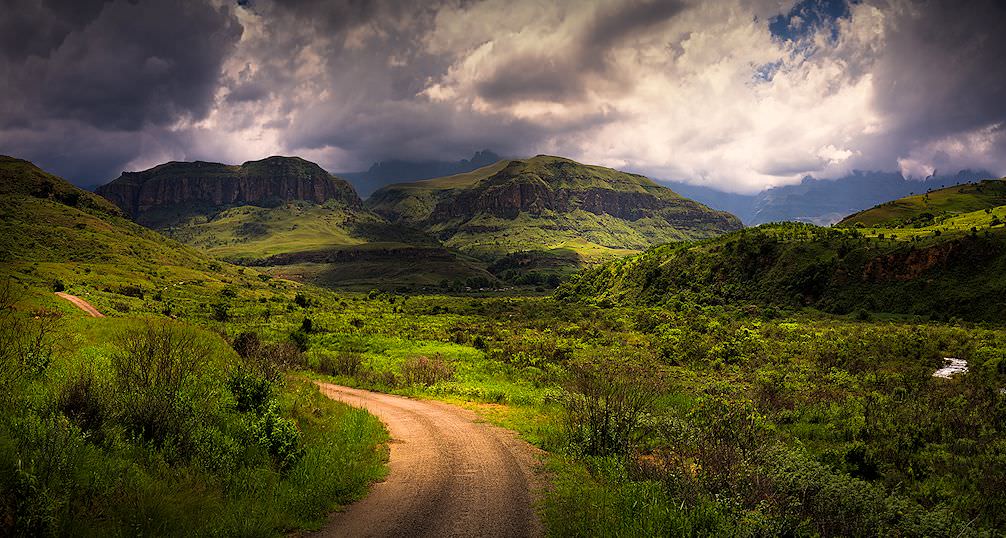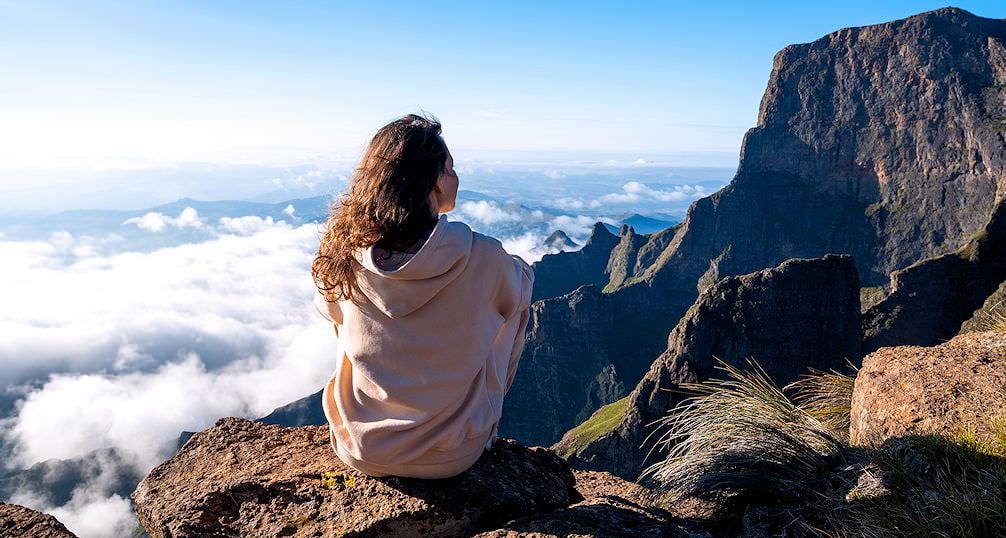
The northern region of the KwaZulu-Natal Province in South Africa is one of the best places in South Africa to see some of the most varied and stark strongholds of our continent's wilderness.
The iSimangaliso Wetland Park, one of South Africa's 10 UNESCO World Heritage sites, and Hluhluwe-iMfolozi Game Reserve, a prime safari destination where the Big 5 can be seen in great numbers, are within one hour's drive from one another. Let's look at which adventures await for this excellent pair of destinations and how you can make full use of what the region offers.

The single biggest reason why tourists travel to South Africa is to experience a wilderness safari, with all the natural majesty of the many animals you'll see and the exclusivity of many of our top-end lodges. The Hluhluwe-iMfolozi Park is one of the best places in the country to experience this. Here, you will see many rhinos grazing on the grasses of the African savanna and elephant herds splashing about in rivers. You'll see the African sun, set over the horizon in beautiful hues of red and orange, and hear the night come alive with the sounds of bushbaby's and perhaps even a lion roaring out from a distance. You might even see cheetahs sprinting through the grasslands in pursuit of prey or giraffes sticking their heads above the acacia canopies in the park's center, curiously observing their visitors. There is so much to see and experience and great lodges to stay at as you do so, offering everything you'd expect from a luxury safari in South Africa. It will be an unforgettable and relaxing experience being immersed in the natural beauty of the place.

Sodwana Bay is a subtropical beach paradise within the iSimangaliso Wetland Park. Sodwana's shallow waters are temperate and teeming with life, which makes it an excellent place for snorkeling and any other water sport. The southernmost coral reefs in Africa are found here, along with a fantastic array of bizarre underwater creatures and an alien-like world. The Coelocanth, a medium-sized fish and living fossil, has been sighted at Sodwana Bay, one of only a handful of places in the world, while whale-watching tours that set from Sodwana can take you up close to our giant aquatic cousins between July and November. Angling and deep sea fishing is another great day activity, or venturing into the beautiful scenery with a nature trail or guided walk. There is plenty to do here, like surfing the beautiful east-coast waves, looking out for Pel's fishing owl on a birding tour, or simply enjoying a cocktail on the beach, watching the sunset over the waters. Families with children will find Sodwana especially appealing, and there is something for everyone.
The newest section of the iSimangaliso Wetland Park offers visitors beautiful routes through untouched coastal forests leading up to the border with Mozambique. These subtropical forests, both coastal dune and coastal lowland forests, are home to some lesser-known animals and plants not typically seen on the African savanna, like the Red Forest Duiker or Samango Monkey. Trees hundreds of years old are common here, many in the milkwood and teak family. Stop at a picnic spot or viewpoint here, and you'll feel like you're at the edge of the earth, sitting under the forest canopy, looking out over the Indian Ocean.

Lake St. Lucia is Africa's largest estuary and home to eleven species endemic to the park. There are eight kingfishers and many other bird species found here, with hippos and crocodiles in the lake and herds of elephants. The estuary itself is quite saline, however, and so elephants are often spotted coming to drink from camp water sources during the dry season. Many migratory birds flock here in search of food in the summer, best seen from a boat cruise on the water.
The Maloti-Drakenberg Park is a transfrontier conservation area on the border between South Africa and Lesotho, the highest country in Africa. It was first inscribed as a UNESCO World Heritage Site in 2001, both for its collection of rock art painted on the walls of caves scattered within its borders and for its incredible natural beauty and biodiversity. Few would have heard of all this transfrontier park has to offer. Here, we explore the question: Which secrets does this mountain fortress hold?

The San are nomadic hunter-gatherers who have lived in Southern Africa for thousands of years. They are our land's first inhabitants and had a culture that was at one with nature. Some of the most famous remnants of this lost culture are the rock paintings scattered throughout the region, depicting old, long-forgotten stories, many of which feature characters from the animal kingdom. The Maloti-Drakensberg Park houses 690 rock painting sites in caves and gorges of the park's 2500 square kilometers. The San first came into contact with Bantu peoples that migrated south from Central Africa in the 13th century, and then with European peoples migrating north from the Cape in the 19th century. Today, little is known about their culture and customs, but their oneness with the natural world and reverence for its many creatures has become a hallmark of our shared South African identity.
The Drakensberg is home to abundant plants and animals, many endemic to the region. The high grassland slopes of these mountains are home to many Proteas, ferns, endemic grasses, shrubs such as Ericas, and an endemic aloe species - the Spiral Aloe. White Rhino and giraffes keep to the lower slopes, while antelope such as Oribi, Reedbuck, and Grey Rhebok are also in the mix, with majestic herds of the mighty Eland crossing the valleys as they graze. The Drakensberg Alpine Center is essential regarding biodiversity. It describes a region partly within this transfrontier park that boasts extraordinary levels of plant endemism, largely because it is so isolated high up on the plateau ridge. The Gladiolus loteniensis, a very rare white and pink lily; Gnidia singularis, a species of fynbos that makes a small whitish yellow flower; and the critically endangered Protea nubigena or Cloud Protea, are three of many species found nowhere else on earth.

Hiking is synonymous with the Drakensberg to many South Africans, and there is no shortage of stunning hiking trails in the park. Monk's Cowl, the Amphitheatre, Gudu Falls, the Mweni Circuit, and the Tugela Gorge are just some of the breathtaking routes and destinations for a hike in the mighty 'uKhahlamba,' or 'barrier of spears', as the Drakensberg mountains are called in isiZulu. There are several trails to consider of varying difficulty, ranging from forty-five minutes to a few hours in duration, some along gentle slopes and some going up near vertical rock faces, so be sure to do your homework before going on a hike. The scenery, plant life, and amazement of this beautiful region will take your breath away no matter which trail you choose to hike.